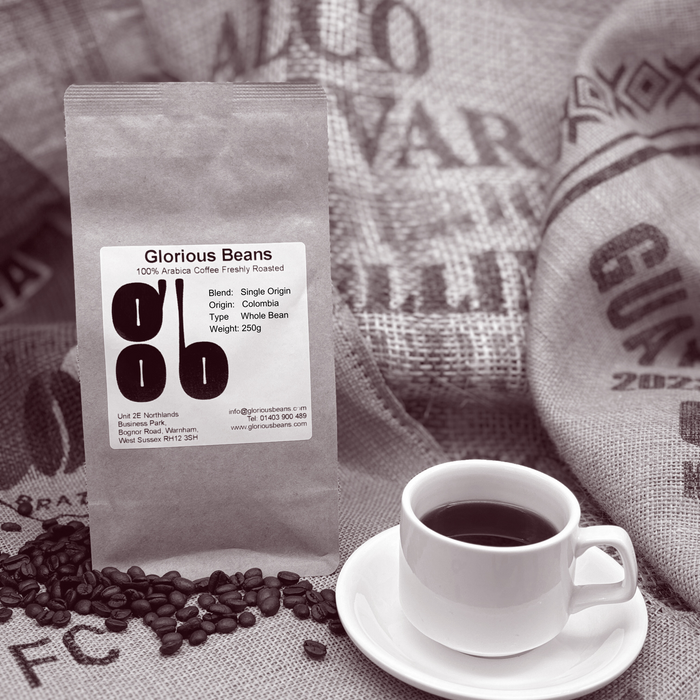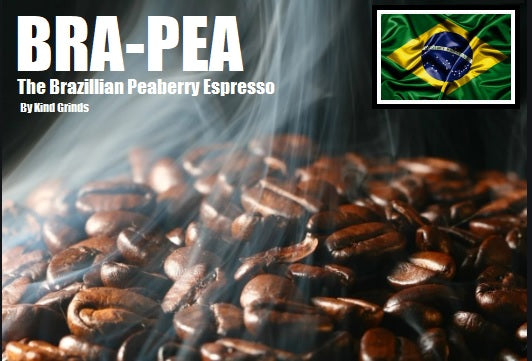Coffee Beans Uncovered: Uncovering the Keys of Coffee and Blended Coffee Beans
When you think concerning coffee, what comes to mind? Is it the abundant aroma of coffee or the complexity of a well-crafted blend? Recognizing the subtleties of coffee beans can change your experience.
The Origins of Coffee: A Historic Viewpoint
Although coffee is currently a staple in coffee culture worldwide, its beginnings map back to the early 20th century in Italy. In 1901, Luigi Bezzera patented the first coffee device, intending to brew coffee faster than traditional approaches.
Comprehending Coffee Beans: Characteristics and ranges
When you assume about espresso, it's important to acknowledge the different bean selections and their distinct flavors. Each type brings a distinct personality to your mug, influenced by variables like roast degrees. Understanding these elements can elevate your espresso experience considerably.
Coffee Bean Varieties
As you explore the world of espresso, you'll swiftly discover that not all beans are produced equal; each variety brings its very own unique tastes and characteristics to your cup. Arabica beans are known for their smooth, nuanced tastes and reduced caffeine content, making them a favorite among coffee aficionados. Each variety provides something different, so experimenting will help you discover your best coffee.
Flavor Profiles Described
Recognizing the flavor accounts of various coffee beans can elevate your coffee experience. Each bean variety uses one-of-a-kind characteristics that influence mouthfeel, aroma, and taste. Arabica beans typically provide a sweeter, extra intricate taste with hints of fruit and floral notes, while Robusta beans often tend to be bolder, with nutty and natural undertones.
When you check out single-origin beans, you may uncover distinctive local flavors-- Central American beans might be citrusy and intense, whereas Italian blends often supply rich, chocolatey notes.
Roast Levels Impact
Roast levels play an important duty in shaping the flavor and scent of coffee beans, affecting your overall coffee experience. Comprehending these roast degrees aids you pick the espresso that matches your preference choices. Trying out with various roasts can lead to fascinating discoveries, improving your appreciation for coffee.
The Art of Blending: What Makes Blended Coffee One-of-a-kind
What makes mixed coffee so remarkable? You can experiment with numerous combinations to enhance body, sweetness, and level of acidity, resulting in a brew that's richer and a lot more intricate than a single-origin coffee.
Mixing likewise allows you to satisfy diverse taste choices. You can craft a mix that's mellow and smooth or one that's bold and robust, relying on your audience. And also, blending can assist keep uniformity, using a trusted flavor experience despite seasonal variations in beans. So, whether you're a home or a barista maker, grasping the art of blending opens a world of creative thinking and flavor opportunities, making your coffee experience really distinct - SOE.
Flavor Accounts: Tasting Notes of Coffee vs. Blended Coffee
Blended coffee supplies a world of taste opportunities, but when it comes to espresso, you're looking at a more focused experience. Coffee commonly showcases bold, rich flavors with a thicker mouthfeel.
On the other hand, mixed coffee provides an intricate tapestry of tastes. You can discover a range of tasting notes, from sweet and nutty to floral and fruity. Each blend can provide something special, often integrating beans from various areas to produce a well balanced profile.
While coffee supplies a punch, combined coffee invites you to appreciate the nuances. Whether you choose the robust stamina of coffee or the complex flavors of combined coffee, each cup tells its own story, awaiting you to find.
Brewing Techniques: Developing Your Espresso Shot
To attain the perfect espresso shot, recognizing the brewing techniques is essential, as even small adjustments can greatly affect the flavor and quality. Beginning by utilizing fresh, high-grade coffee beans; grind them simply before brewing for optimum taste. Goal for a fine grind, concerning the uniformity of table salt, to ensure excellent extraction.
Next, take notice of your water temperature level; it ought to be between 195 ° F to 205 ° F. Too warm or too cool can ruin your shot. Usage regarding 18-20 grams of coffee for a double shot, and tamp it evenly with strong stress to develop an uniform puck.
A longer extraction can lead to bitterness, while also brief can result in sour flavors. Exercise these strategies constantly, and you'll refine your skills, accomplishing that abundant, full-bodied espresso shot you long for.
The Function of Roast Levels in Coffee and Blended Coffee
After understanding the brewing techniques for espresso, it's time to consider just how roast degrees affect the taste profile of your coffee. Light roasts tend to highlight the coffee's beginning, offering bright acidity and fruity notes, while tool roasts equilibrium level of acidity and sweet taste, developing a well-shaped taste.

Checking Out Sustainability: Moral Sourcing of Coffee Beans
When you pick coffee, you're not simply choosing a flavor; you're deciding concerning the influence on farmers and the setting. Understanding Fair Trade practices, natural farming methods, and certification standards can assist you support sustainable coffee sourcing. Let's explore just how these variables add to an extra honest coffee experience.
Fair Profession Practices
Fair Trade techniques SOE play an essential role in ensuring that coffee beans are sourced morally and sustainably. You sustain farmers that obtain reasonable wages and job in secure conditions when you select Fair Profession coffee. This commitment to moral sourcing aids battle destitution and advertises neighborhood advancement in coffee-growing areas. You'll find that Fair Trade accreditation likewise urges eco-friendly farming practices, as producers are incentivized to protect their land and resources. By deciding for Fair Trade brands, you're not just appreciating a rich mug of coffee; you're making a favorable effect on the lives of those that grow it. Your option matters, and it attaches you to an international motion concentrated on justness and sustainability in the coffee sector.
Organic Farming Techniques
As you explore the globe of honest coffee sourcing, natural farming methods emerge as an important part of sustainability. Additionally, it usually leads to stronger, much healthier coffee plants, resulting in richer flavors in your cup. When you choose for organic coffee, you're making a conscious choice that profits both the world and your taste.
Qualification Specifications Explained
Understanding certification criteria is essential for any person interested in morally sourced coffee. These standards, such as Fair Trade, Rain Forest Partnership, and USDA Organic, warranty that coffee is expanded under sustainable methods. When you choose licensed coffee, you support farmers who abide by moral labor techniques and environmental management.
Fair Trade accreditation concentrates on supplying reasonable salaries and working problems, while Jungle Alliance highlights biodiversity and environment conservation. Next time you're at your local café or grocery store, look for these labels, and feel good knowing your coffee acquisition positively affects communities and the setting.
Often Asked Inquiries


Just How Does Elevation Influence the Development of Coffee Beans?
Elevation effects coffee bean development by influencing temperature and climate. Higher elevations typically produce denser beans with even more facility tastes, while lower altitudes can lead to faster growth but much less flavorful outcomes. You'll taste the difference!
What's the Difference Between Arabica and Robusta Beans?
Arabica beans are sweeter and much more complicated, while Robusta beans have a stronger, harsher flavor with higher caffeine content. You'll discover Arabica favored for specialized coffees, whereas Robusta's frequently utilized in immediate coffee and espresso blends.
Can Coffee Beans Spoil or Lose Taste In Time?
Yes, coffee beans can go bad and shed flavor over time. If you store them improperly or maintain them also long, they'll become stagnant. Always keep your beans in an airtight container away from light and moisture.
What Are the Health Benefits of Alcohol Consumption Espresso?
Consuming coffee boosts your energy, enhances psychological quality, and might reduce the risk of certain illness. It's rich in antioxidants, supports metabolism, and can boost mood, making it a valuable option for your daily routine.
How Does Water Top Quality Influence Coffee Extraction?
Water top quality significantly affects coffee extraction. It influences the solubility of oils and flavors, influencing preference and scent. Utilizing filtered water can boost your coffee, making sure a pleasurable and well balanced cup whenever you brew.
Coffee Beans Uncovered: Uncovering the Tricks of Espresso and Blended Coffee Beans.
Recognizing the taste profiles of different coffee beans can elevate your coffee experience.Roast degrees play an important function in forming the flavor and fragrance of espresso beans, influencing your total coffee experience (SOE).Blended coffee offers a globe of flavor opportunities, but when it comes to espresso, you're looking at a more focused experience.After understanding the developing strategies for espresso, it's time to contemplate how roast degrees affect the flavor profile of your coffee